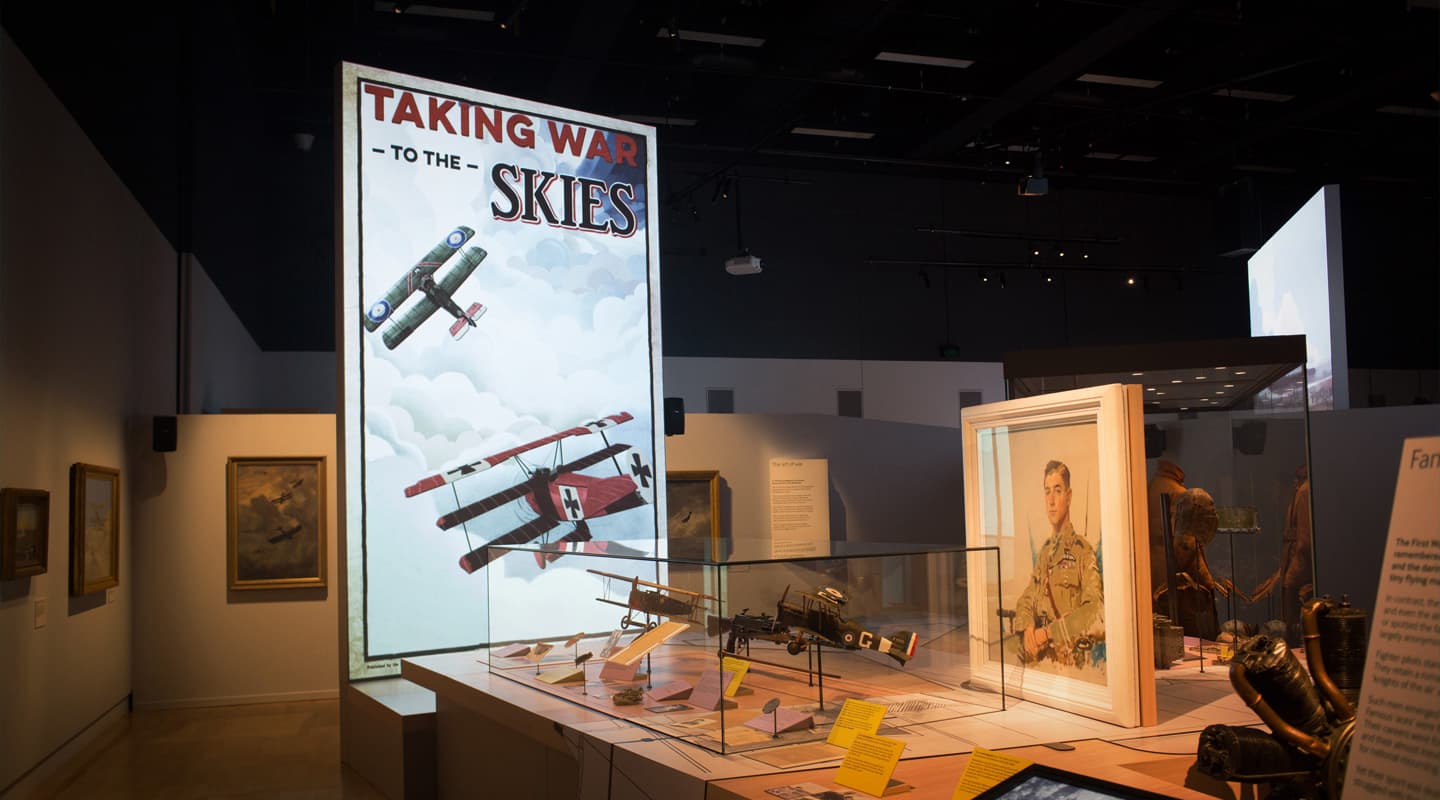
In The Trenches
Nothing ‘over the top’ about the travelling AV of the WW1 Centenary Exhibition.
Text:/ Christopher Holder
As 100-year anniversaries tick over, World War 1 is never far from our thoughts, and our museums. Last issue we paid a visit to the Australian War Memorial’s First World War exhibition, this issue we visit The WW1 Centenary Exhibition currently being shown at Museum Victoria, which is similar… but different – similar for its reliance on cutting edge AV, and different because it’s a travelling exhibition, and the equipment choices reflect that. That said, don’t get the idea that ‘travelling’ entails circus tents and an entourage of semi-trailers, there’s nothing about this exhibition that looks temporary. Next stop is North America in October.
The WW1 Centenary Exhibition is based on some 350 significant historical artefacts from the WW1 collections of Imperial War Museums (IWM) in London. The special collection of artefacts, ranging from large-scale artillery machines to intricate personal objects, are featured alongside state-of-the-art immersive digital technology.
IEC Exhibitions is responsible for taking the pieces to the world and translating the London Imperial War Museum permanent WW1 exhibition into something that can effectively flat pack ’n’ rack into a container. In so doing, IEC worked with the IWM’ s exhibition designer Casson Mann, sound designer Idee and Klang, and local content creators and illustrators/animators.
AV spoke to the exhibition’s Project Manager Ki McGinity about the technical and creative decisions he made to keep the show on the road. We last spoke to Ki in 2012 when he was with Grande Exhibitions, which was touring an AV-heavy Van Gogh show. It’s fascinating to hear how his specialised world has changed quite radically in around three years, especially with the advent of HDBaseT.
TOURING PACKAGE
Ki McGinity: “For this exhibition we took what the Imperial War Museum had done in its permanent gallery and made a touring evaluation of it. We had to find an AV solution that could travel the world: equipment that would be low maintenance, keeps ticking away from a hardware perspective; and something that we could do on a budget.
“With touring, the biggest factor is technical support – you don’t necessarily have that daily onsite oversight – so the AV has got to be reliable and robust. For example, the London IWM has an interactive display based on a line of kinetic cameras with multiple in-line sensors. That was immediately out of the question to tour because it would require a technician to tweak it every day. But if we could turn that idea into something based on a touchscreen we might do that instead, and re-author the content with the original developers and format the software to be output on 42-inch touchscreens.
“Touring an AV show means being careful with how you do it from a logistics point of view. You ask yourself: ‘What’s going to make it quick?’, What’s going to make it reproducable?’, and Watchout is key to all that. I couldn’t recommend the product more highly for multi-display output. Admittedly, I’m biased, I’ve been working with it for so long. But its power and bang for buck is unmatched in my view.
“The new release version of Watchout 6 is impressive. It has some really good mapping features, some really good dynamic HTML5 display features to run dynamic content. I’m looking forward to seeing what it’s capable of.”
HI-RES WAR EFFORT
Ki McGinty: “We wanted to retain as much of the super hi-res archival footage resolution as we could. So we decided to use Watchout because it was probably the most cost-effective option.
“The bezel of the video wall is a factory frame window idea — as if you were looking through the windows at the factory. We’re using Phillips 46-inch panels. We did a little bit of colour calibration on them, but they were really good straight out of the box. A stereo soundscape provides ambient factory sounds.”


AUSSIE ANIMATORS
The two-minute animations were produced by Andrew Barry from Design Collective. Meanwhile, Picture Drift in Sydney produced the trench and ambient animations. The illustrations look like they’ve come straight out of that period and the references are spot on.
Ki McGinty: “The illustrators poured over the style to get it right. We did an exercise where we grabbed thumbnails from Google of period posters and inserted our own. Nobody could pick the difference — ie. which was period and which was contemporary.”

TRENCH: HIDDEN DEPTHS
The WW1 Centenary Exhibition’s ‘trench’ that connects exhibits is a newa design, created from scratch. The permanent exhibition in London is rather more literal, featuring the cast of a hand-dug-in-the-south-of-France trench — fibreglassed and recreated on site. Not easily trucked from city to city.
To their credit, the exhibition designers, Casson Mann, came back with perhaps an even better idea — an architectural, metaphorical trench.
Within that the AV plays a key role. The projections evoke different periods of the day, different seasons, different environmental conditions, rain, and different battle conditions. The animations, again, meticulously reference artwork from the period down to the thickness of the barbed wire. The result is a ghostly, otherworldly atmosphere, made all the more immersive thanks to an Idee und Klang 8.2 soundscape using sound effects from the time — a tank rolling through, a flare going off, the distant report of rifle fire. The Trench soundscape locks step with the nine-minute loop of the three Lands it provides access to.
Ki McGinty: “I love the trench. It’s so emotive, and I think as a linking concept it elevates the stories of the three chapters as a whole.”
There are three ‘Lands’ (Land, Air, Sea) within the exhibition each with an AV animation. The question for Ki and his team — given each space opened up to all the other spaces — was how to ensure the audio wasn’t treading on the toes of other animations. The answer was to ensure no two animations were playing simultaneously. All three rooms would be on one larger loop, with the interconnecting trench also sync’ed to fill the gaps.
Ki McGinty: “We’ve got the rooms synchronised to a nine-minute loop. The first animation plays in one Land followed by a two-minute gap, when audio for the trench plays, then it plays in Air, then a two-minute gap in the trench, then it plays at Sea. In that way the narratives are always separated without a lot of audio bleed between areas.
“The AV also leads people’s experience. When an animation is in ‘story mode’ — a two-minute action sequence — all eyes are drawn to the screen. Then for the remaining seven minutes the ‘ambient animation’ invites eyes to look elsewhere — such as the priceless artifacts. The animation art style is all inspired by First World War posters.”
I HEART HDBASE-T
Ki McGinity: “Most of what you see here is done over HDBaseT, which has been a great technology for us. I really, really love it.
“Having HDBaseT’s video, audio, control and power over one cable has made my life a lot easier. Back in the days of the last Van Gogh show, we were using Gefen SDI extenders. We had 40 projectors and 120 network cables running to them. Actually it was more like 160 cables – three to each projector and a redundant spare. It took us seven days to lay it out!
“It was one of the main reasons for choosing the 17 Epson G Series projectors, because of the onboard HDBaseT – it saved us a lot of money. Unfortunately, I tried to save even more money by reducing the spec on some of the projectors – from the G6750s down to G6550, where I could. But the G6550 doesn’t have HDBaseT onboard. So we have to couple those with a little Lightware HDBaseT receiver.”

THE SHOCK OF IMPOSSIBLE MASKING
The ‘Shock of War’ is a powerful and poignant panel that describes just how different WWI was to any previous conflict. Idee und Klang put together the 7.1 soundscape, and used a lot of original, studio-generated sound effects. The producers motion-captured a stuntman to achieve the falling effect and then reproduced that to simulate a battalion of falling British soldiers.
Ki McGinity: “This is where Casson Mann, as conceptual designers, sometimes test the limits of technology. It’s an extraordinary art installation but to project onto such a surface which has rifles only an inch thick and has more than one layer — where shading from a projector is inevitable — well, it’s a big ask. To mask something like this is almost impossible. And if the projector moves a millimetre, it completely blows out, so it needs plenty of attention to stay locked.
“On this job we brought [Interactive Controls boss] Dean Stevenson in on everything, from control through to display — Dean managed the set up of control, installation of control, installation of cabling, and then they hung all the projectors and connected and commissioned all the touchscreens. Dean and his team don’t miss a beat. Saying that, even Interactive Controls struggled with this.”

A TOUCH OF ELO
Ki McGinty: “This touchscreen explains the development of the trench network in the Western Front; why they went into trenches; how they were built; how diverse they became; what techniques they used.
“We use a touchscreen with small form factor Intel NUC PCs at the back — which haven’t missed a beat… heat hasn’t been a problem.
All the touchscreen displays are from Elo and they work really well. I hadn’t used Elo displays before and they’re not the cheapest but you are getting an extra level of commercial robustness. I’m not saying a number of other commercial panels couldn’t have done the job, but the fact Elo come with an open housing means we could integrate the monitors with custom housing really easily. Normally, if you’re trying to find a 5:4 monitor (which we used for 4:3 content), everything’s got a plastic wrap on it or plastic housing. The Elo documentation has been spot on, you can prepare the housing and your integration before you actually get the unit. We built everything in advance before we’d even seen the monitors, working off the Elo CAD plans. The monitors turned up and they were pretty much perfect.
“The robustness is something to think about when you have thousands of people prodding your screen every day. We’ve used the Elo screens even for displays that aren’t touch sensitive — just because a screen isn’t touch sensitive doesn’t mean the kids won’t bash it.”

ALL AT SEA
The animation in the War at Sea space focusses on a gripping tale of HMAS Vindictive raiding a German U-Boat base. The idea of the wide format screen was to continue the horizon line in all the artwork on that wall.
Ki McGinty: “The original brief was for a ultra-wide 9m screen. We settled on 7.2m. We’re using two edge-blended Epson projectors.
“The image has remained remarkably stable. We had concerns because our exhibition grid hangs off the Melbourne Museum grid, which itself is 8m high. We brought everything down to six metres, hung with stainless steel cable and couplers. I was concerned there would be some sway, which would obviously impact on the projections. It does sway if you touch it, but it’s since settled in — I don’t think we’ve readjusted the blend on this once.”
NETWORK: WATCHOUT
Ki McGinity: “Our Dataton Watchout PCs effectively run the show. We’ve got 17 projectors operating from our Watchout systems which synchronises all of the audio of the content via Medialon Showmaster. Showmaster also controls our on/off commands for our Brightsign media players – we run Brightsigns for looping AV on a number of displays. But anything that’s projector-based is talking to Medialon with a Watchout show behind it. Watchout’s driving all the independent timelines and then Medialon is doing all the cueing, including controlling all the audio cue triggers.
“In the rack room we use Lightware equipment as the sender, you’ve still got to have an HDBaseT sender, but the receiver is integrated within the Epson G6750 projectors. The Lightware gear has been pretty solid.
“Joining the Transmitter gear in the racks are the Lightware EDID managers which supply a constant resolution and refresh rate to the Watchout computers – even if the machines are powered down. Windows doesn’t like on/off and reboot when addressing screens and Watchout gets a bit funky, particularly if you’ve got multiple resolutions in one array, like the portrait-oriented Red Baron display, for example, it looks at it as a different resolution because it’s 1200 wide by 1920 high instead of the other way around. So the moment it kinda drops one resolution, it would kill all four projectors in the array. The EDID emulator helps settle things down.
“Dean Stevenson and his team at Interactive Controls built a web interface for the Medialon controller. It’s not a beautiful interface but it works very well. It means our local techs can shut off an area at a time, shut off the lights, turn on everything in the morning, or we can use the Medialon scheduler, which runs the whole show on auto.”
EPSON GEE SERIES
“We’ve got 17 projectors running throughout the exhibition. As I mentioned, we’re using the new G series Epson projectors — the G6750s and 6550s.
“The IWM was using the Epson G6900WU model, but I found the brightness levels (around 7500 lumen) to be excessive for what we needed. So we pulled things back a notch. We’ve been happy with the Epson performance. They’re a relative newcomer to this particular market but the quality of the projections are more than adequate for our purposes.
“The manual lens shift is probably the only real limitation – I find it’s a little bit fudgy. But as far as brightness and running and clarity, they haven’t missed a beat – 10 hours a day for seven weeks now, and I haven’t seen any diminishing life.”

NO PARTY WITHOUT PUNCH
A 4.0 audio system replays soundscapes produced by Idee und Klang, a Swiss sound designer responsible for the Porsche Museum in Stuttgart, and the BMW Museum, as well as the permanent WWI gallery in London.
Ki McGinity: “They’re a difficult outfit to work with… in a good way. They’re very particular about the types of sounds to be used. They’ll research, record and use original sounds wherever possible, so what they produce has a real authenticity.”
The tabletop displays the tension between the empires at the time. The table animation describes the European geopolitics that led to WWI. The illustrations are from original Punch comics of the time. Punch is still on the scene and IEC Exhibitions paid royalties for the privilege. The projection surface is MDF painted with Screen Goo and the vision is accompanied by a 4.1 surround system – ambient sounds of that period.
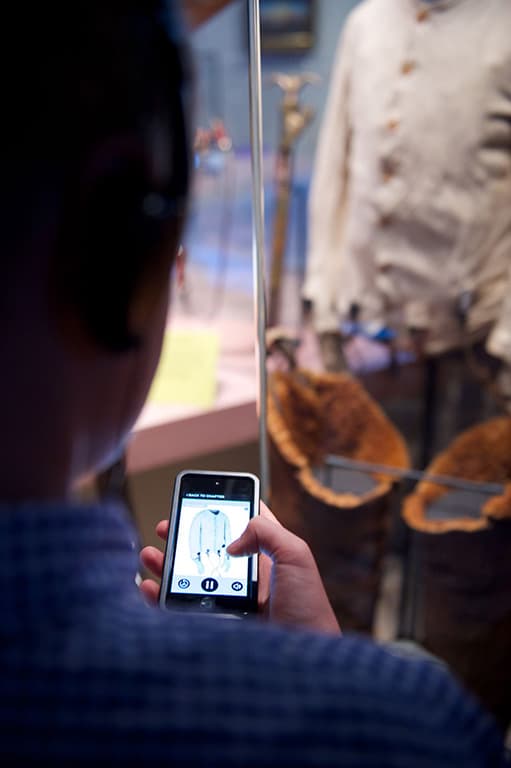
AUDIO TOUR
Ki McGinty: “Art Processors, developers of ‘the o’ mobile guide for MONA [Museum of Old & New Art outside of Hobart], developed our multimedia guide. The idea is to provide a behind the scenes insight from experts. We brought in the two curators Samantha Heyward and Nigel Steel and a third Australian expert, Peter Pederson.
“Then we have the ‘Get Closer’ objects, with the curator talking about the relevance of that artefact, the story behind it and an extended version from the caption. Meanwhile, ‘Listen to the People’ is drawing on the recorded archive of recorded voices in the collection.
“It’s triggered by beacon technology. It triggers the relevant chapter and you can choose what you’d like to explore from there on the handheld touchscreen.”
Art Processors: artprocessors.net
AUDIO OUTPUTS
A QSC QSys control system runs all the audio within the exhibition, that in turn is managed by Medialon control. There are 64 QSC loudspeaker boxes (AD-S52s) and seven QSC subwoofers (AD-S82T) driven by 32 QSC GX series amps via 4km of speaker cable. The speaker system was specified, supplied and installed by Daniel Thomas and the team at Light and Sound Solutions.
Ki McGinity: “The QSC audio system is set up in a 1:1 configuration. We have 64 independent channels – one speaker per amp channel. It’s a simple patch and works well. It’s a pretty onerous rack to tour around but it’s nice – great sound quality, great reliability.
“Saying that, the amps are the only items in the entire exhibition without variable voltage. So we’ll need to swap them out when we head the America later in the year.
“It’s amazing how we take variable voltage for granted. Wasn’t so long ago I recall needing to put in three-phase transformers for trips to The States, which was a nightmare. Now we’ve built almost the entire exhibition with variable voltage power supplies.”
KEEPING THE LIGHTS LOW
Ki McGinity: “Overall, it’s quite a low voltage system. The whole show draws around 16,000 Watts, including the lighting, which is low voltage LED. This is the first show where I’ve moved entirely to all low-voltage lighting – a great leap forward in technology. So rather than carry around massive dimmers, all the dimming is on board. We have 250 Selecon BeamShapers, with beautiful LED lamps in them, about 17 projectors and about 20 screens.”
ATTRACTION NOT DISTRACTION
Expectations of special exhibitions are sky high. And to exceed those expectations without the luxury of an installation and truly bedding down into a site is remarkable. But the IEC team has managed that. Yes, the artefacts are the real stars but tell that to the 10 year old visiting with his grandparents! At its core, and what the designers Casson Mann are at pains to ensure: the WW1 Centenary exhibition AV enhances the experience and never distracts. Mission accomplished.
CONTACTS:
WWI Centenary Exhibition: ww1exhibition.com.au
IEC Exhibitions: www.iecexhibitions.com
Interactive Controls (Dataton Watchout, Medialon): www.interactivecontrols.com.au
Keepad Interactive (Displays): 1800 463 279 or keepad.com
Bluebottle (Lighting): (03) 9329 0709 or bb3.net.au
Idee und Klang (Sound Design): ideeundklang.com
Light and Sound Solutions (Audio Installation): 1300 66 85 33 or www.lightandsound.com.au
Epson: www.epson.com.au/installation
Technical Audio Group (QSC): (02) 9519 0900 or www.tag.com.au
Lightware: lightware.com.au
Avico (Philips): www.avico.com.au
Selecon: www.seleconlight.com
Sektor (Elo): 1300 273 586 or www.sektor.com.au

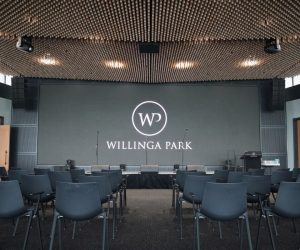
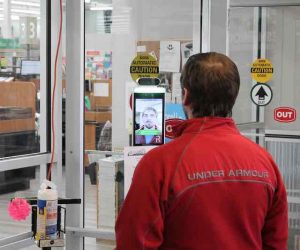

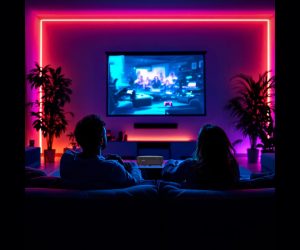
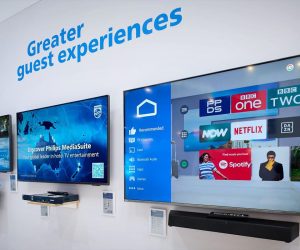

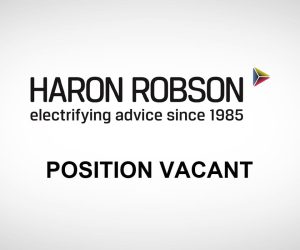


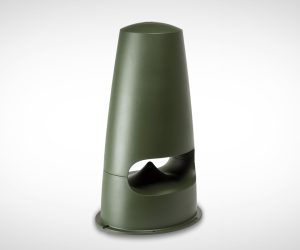
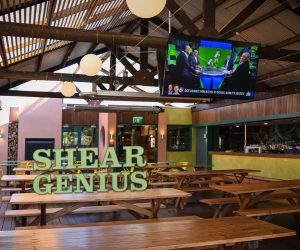
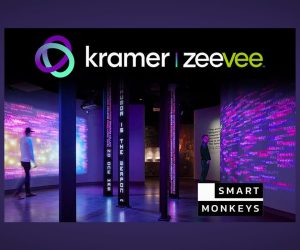


RESPONSES